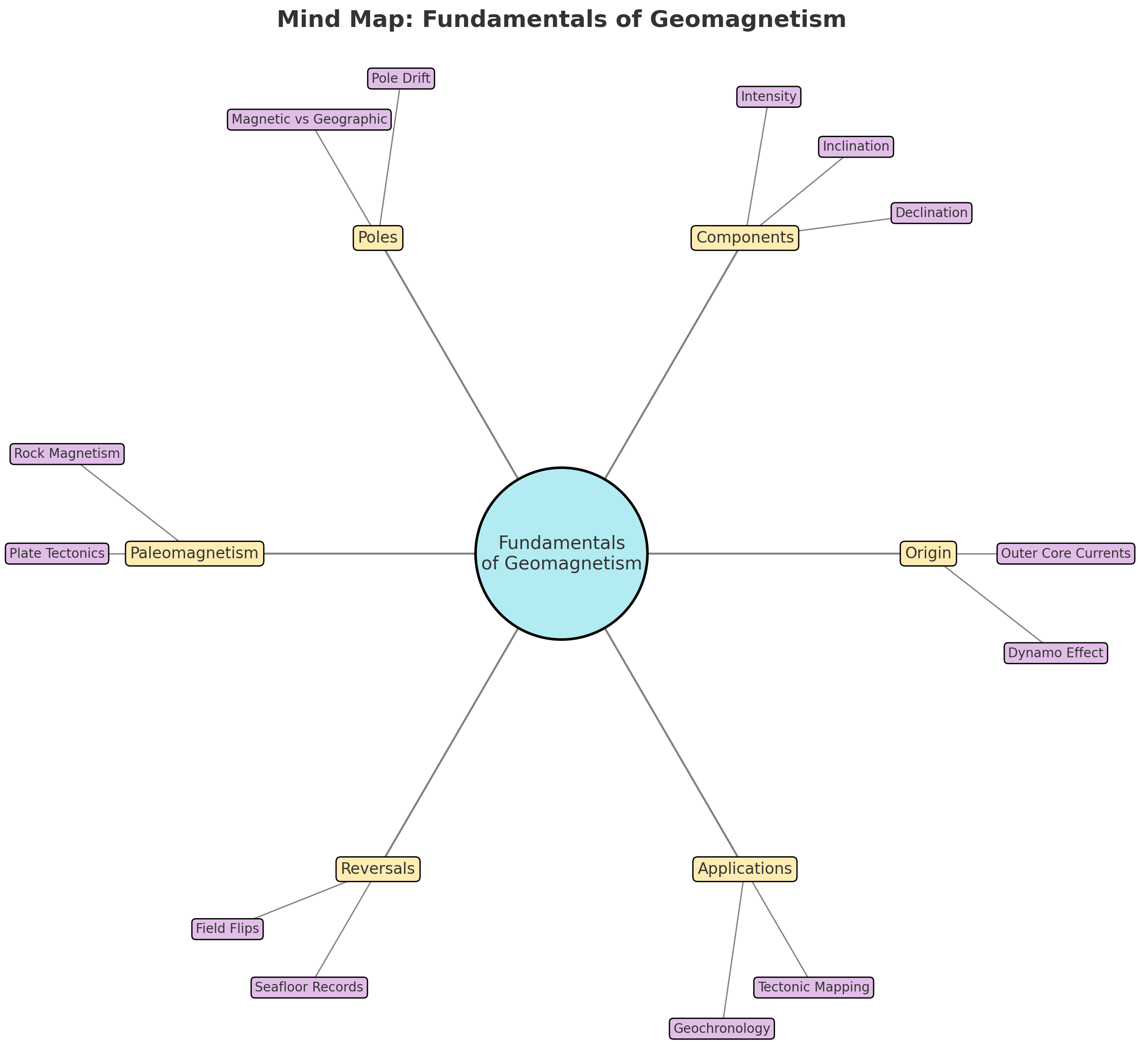
23 Jul Fundamentals of Geomagnetism
Fundamentals of Geomagnetism – UPSC Geography Optional
Introduction
Geomagnetism, the study of Earth’s magnetic field, is a fundamental concept in physical geography and geophysics. It holds significance in understanding Earth’s internal structure, tectonic movements, and orientation systems. For UPSC aspirants with Geography optional, this topic is crucial for both conceptual clarity and application in various physical phenomena.
1. Origin of Earth’s Magnetism
The Earth’s magnetic field originates from the dynamo effect generated by the movement of molten iron and nickel in the Earth’s liquid outer core. These metallic flows produce electric currents that create magnetic fields. Due to the Coriolis effect, these currents align in spirals, forming a geomagnetic field that resembles a dipole.
Best geography optional coaching
Best geography optional teacher
2. Structure of the Magnetic Field
- Magnetic Declination: Angle between magnetic north and true geographic north at a particular location.
- Magnetic Inclination: Angle made by the magnetic field lines with the horizontal surface.
- Intensity: The strength of the magnetic field, usually expressed in nanoteslas (nT).
3. Magnetic Poles vs Geographic Poles
The Earth’s magnetic poles are not aligned with the geographic poles. They shift due to changes in the flow of molten materials in the outer core. This phenomenon is called geomagnetic secular variation. As of recent data, the magnetic north pole has been drifting rapidly across the Arctic.

Fundamentals of Geomagnetism infographics
4. Paleomagnetism
Paleomagnetism is the study of the record of Earth’s magnetic field preserved in rocks. When igneous rocks form, the iron-bearing minerals align with the Earth’s magnetic field. Over millions of years, these records help geologists:
- Understand continental drift and plate tectonics.
- Track changes in magnetic pole positions (polar wandering).
- Record magnetic reversals that have occurred periodically.
5. Magnetic Reversals
Over geological timescales, the Earth’s magnetic field has reversed multiple times. These reversals are recorded symmetrically on either side of mid-ocean ridges, confirming seafloor spreading and plate tectonics. Notable reversal events include the Brunhes-Matuyama reversal (~780,000 years ago).
6. Geomagnetic Field Variations
The geomagnetic field is not static. Its variations can be categorized as:
- Secular Variation: Slow changes in field strength and direction over decades.
- Diurnal Variation: Daily changes due to interaction with solar winds.
- Magnetic Storms: Caused by solar activity, can affect communication and navigation systems.
7. Applications of Geomagnetism
- Navigation (compasses, GPS calibration).
- Understanding Earth’s interior dynamics.
- Dating rocks through magnetostratigraphy.
- Evidence for plate tectonic theory and ocean floor spreading.
8. Previous Year UPSC Questions
- 2020: Describe the significance of paleomagnetism in explaining the theory of plate tectonics.
- 2018: Explain the concept of geomagnetic reversals and their importance in geological studies.
- 2016: Discuss how the study of Earth’s magnetism provides insight into the internal structure of the planet.
9. Probable Questions for UPSC Prelims & Mains 2026
- What is the geodynamo and how does it sustain Earth’s magnetic field?
- Explain the differences between magnetic declination and inclination with diagrams.
- How does paleomagnetism support the theory of plate tectonics?
- Discuss the causes and consequences of geomagnetic storms.
- Evaluate the importance of magnetic reversals in understanding geological time scales.
10. Conclusion
The study of geomagnetism bridges the gap between Earth’s surface phenomena and internal dynamics. It forms an integral part of geomorphological and geological understanding. With its wide application in tectonics, chronology, and exploration, geomagnetism continues to be a core topic in geography. For UPSC aspirants, clarity on its principles, processes, and practical implications is crucial for scoring well in optional papers.




No Comments